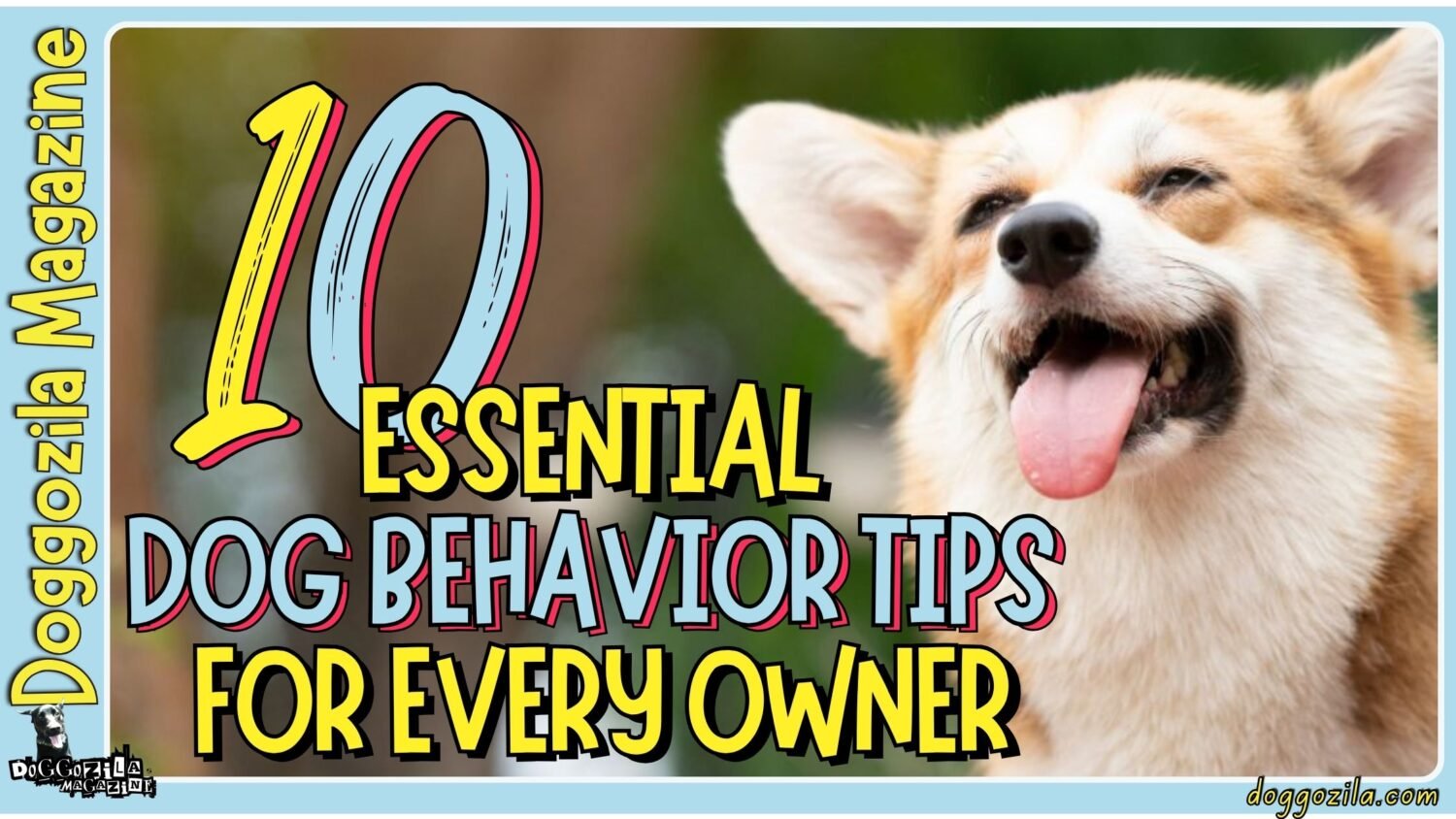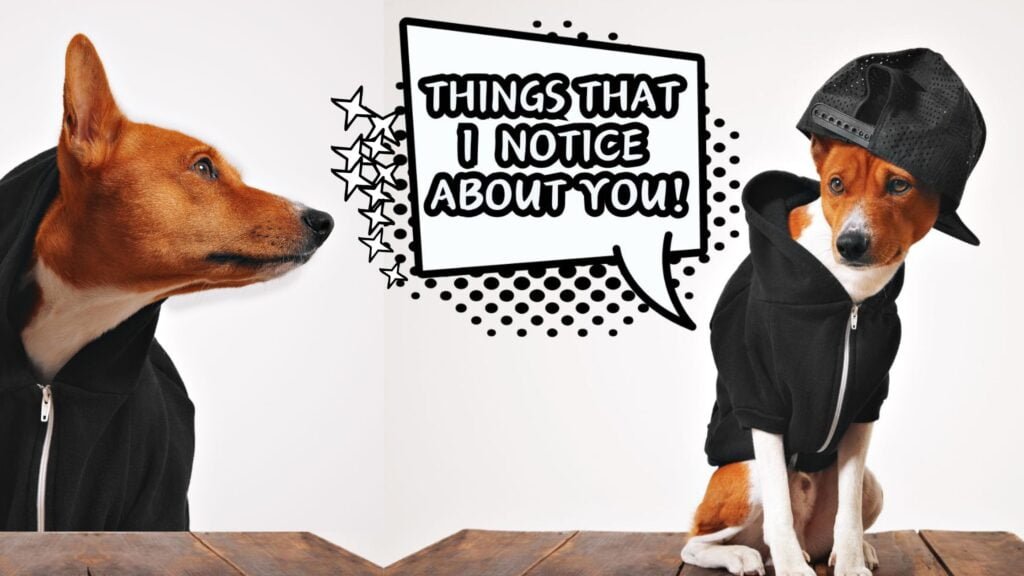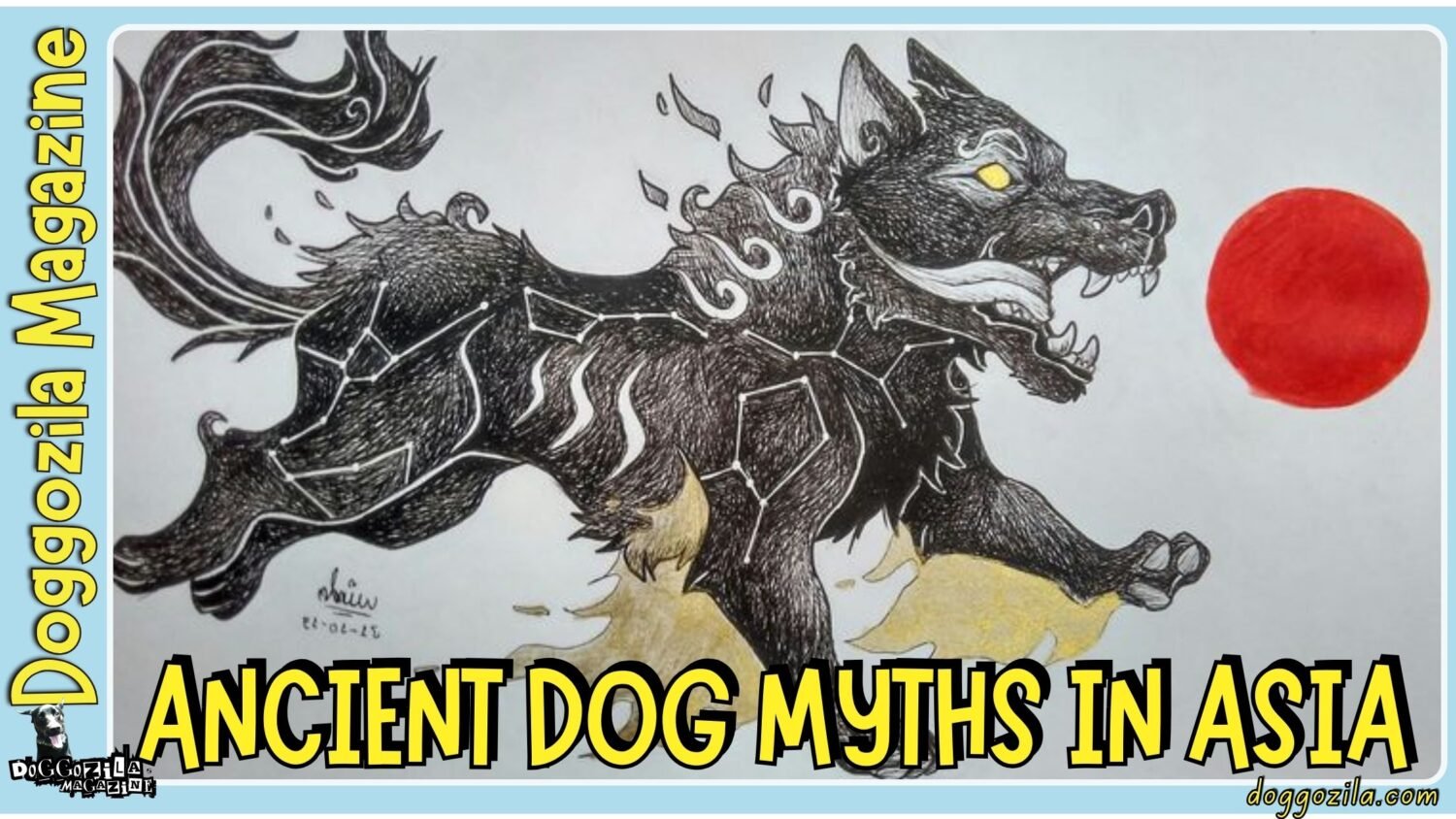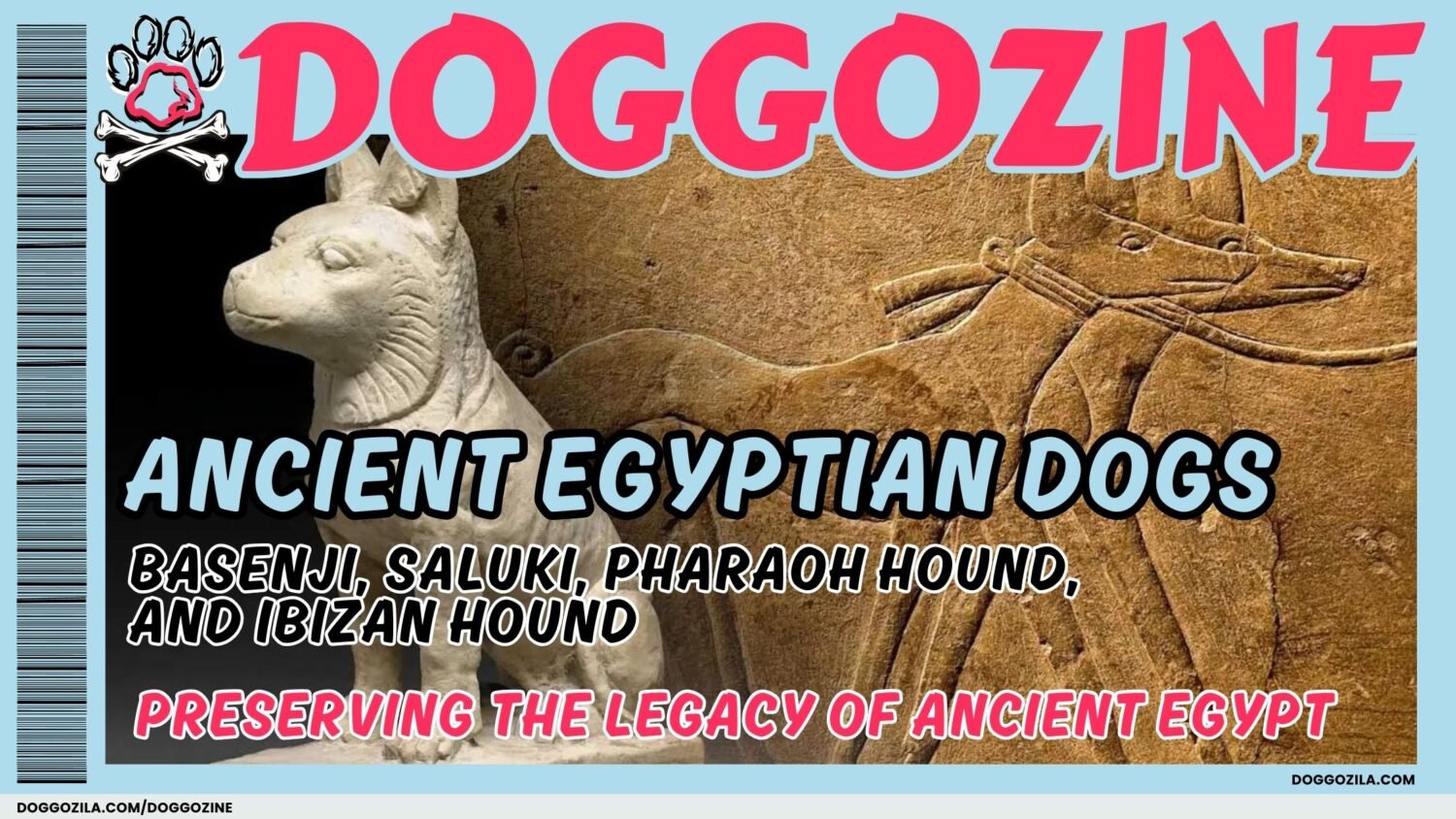Dog body language is a fascinating language on its own, full of nuances that express emotions and intentions without a single bark. One of the most endearing signals is the playful gesture known as the Dog Play Bow, which conveys friendliness and an invitation to interact.
Observers of canine behavior have noted that this gesture can defuse tension and spark joyful interactions between dogs, as well as between dogs and humans.
Studies and anecdotal case studies alike reveal that the play bow is a natural expression of excitement and curiosity, acting as a bridge between different personalities. Embracing this behavior encourages pet owners to understand and respond to their dog’s needs in creative ways.
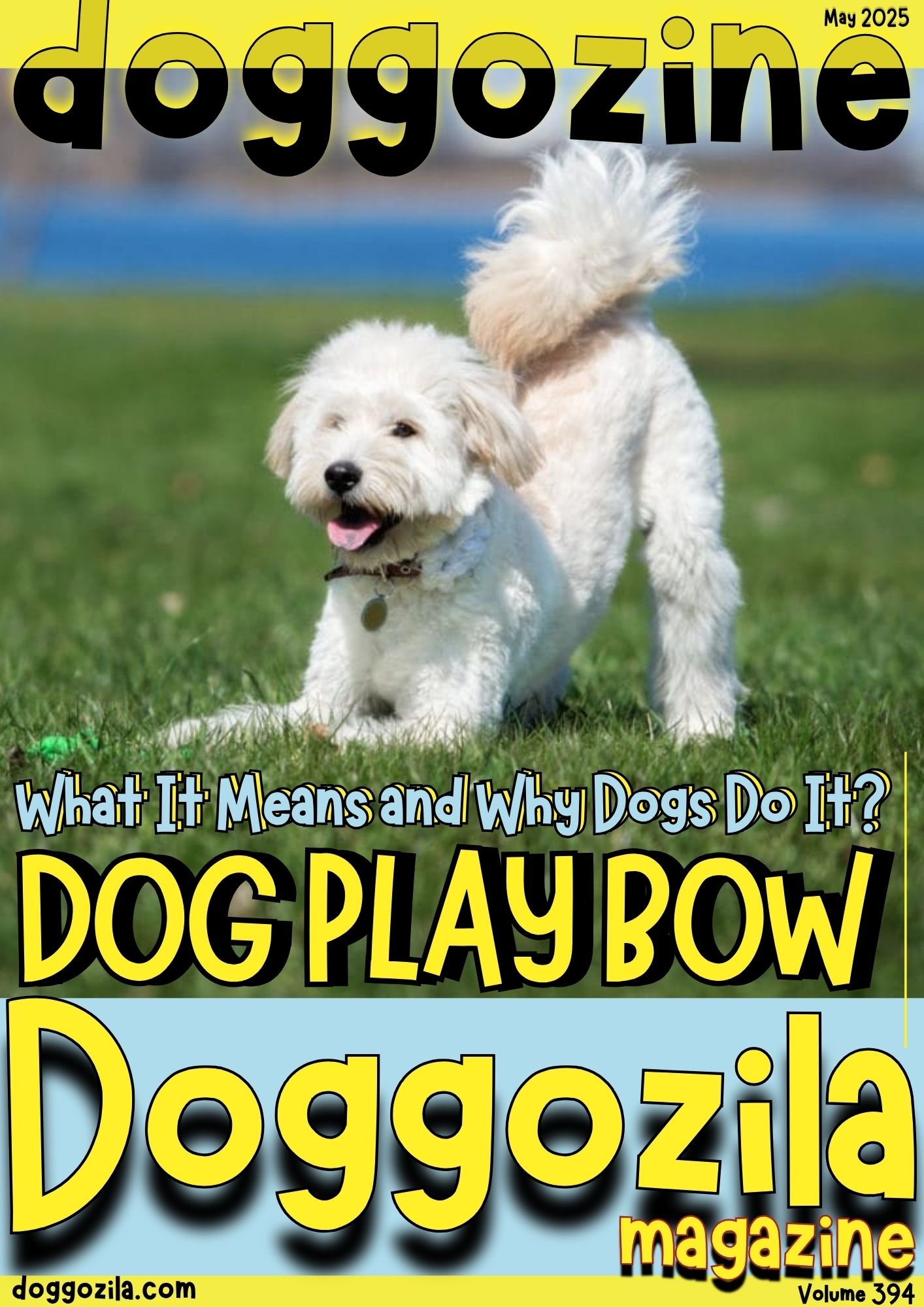
BREAKING DOWN THE CANINE SIGNAL: WHAT IS A DOG PLAY BOW?
When a dog lowers its front body and lifts its hindquarters, it is not a sign of submission but a joyful invitation to play, and this is what we call a Dog Play Bow. Pet owners and trainers note that a well-executed Dog Play Bow often precedes bursts of energy and interactive games. Its clear and instinctive nature makes it one of the most reliable ways for dogs to communicate their playful mood.
Researchers have observed that this gesture can be seen across various breeds and age groups, providing a consistent cue in canine interaction. In playful settings, the bow signals that any forthcoming activity is meant to be fun and non-threatening. This behavior has been documented in multiple studies involving natural canine play and controlled training sessions.
The Role of Body Language in Fostering Playful Interactions
Dogs use body language to tell us exactly how they feel—and a playful bow is one of their most vivid methods of expression. In environments where energy is high and play is the order of the day, this behavior can set the tone for the interaction, creating an atmosphere of mutual trust.
Observations show that a relaxed posture paired with an inviting bow encourages other dogs to reciprocate with playful gestures of their own. The dynamics of these interactions have been a subject of research, revealing that clear body signals help prevent miscommunication during play.
This behavior creates a language of its own that enriches the canine experience and makes interactions more meaningful. The subtle cues, including ear position and tail movement, work in tandem with the bow to form a complete picture of a dog’s playful intent.
Case Studies: Observations of the Dog Play Bow in Natural Settings
Field studies conducted at dog parks and in home environments have consistently highlighted the prevalence of the Dog Play Bow during friendly interactions. In one memorable case study, researchers documented groups of dogs engaging in extended play sessions where the bow served as a precursor to chases and games that lasted for hours.
These observations were complemented by video analyses that captured the natural rhythm and frequency of the behavior over time. Pet owners from different backgrounds have reported that when their dog performs this bow, it often leads to immediate, enthusiastic responses from both canine and human playmates.
The recurring success of these interactions underscores the importance of understanding and embracing this natural cue. Such studies not only reinforce the significance of the Dog Play Bow but also deepen our appreciation for the complexities of canine communication.
🔑 Key Points: The Dog Play Bow is a universal, joyful invitation to play. It involves a dog lowering its front body while raising its hindquarters, signaling fun and non-threatening intent. This behavior is consistent across breeds and ages, making it a reliable communication tool in canine interactions.

THE ORIGINS OF THE DOG PLAY BOW IN FURRY SOCIAL RITUALS
The origins of the Dog Play Bow stretch far back into the history of canines and their ancestral social interactions. Early observations suggest that wild canids exhibited similar gestures to signal non-aggression during encounters, which later evolved into the more refined behavior seen in domesticated dogs today. Its enduring presence underscores a shared legacy among canines that continues to bring joy and playfulness into modern life.
Ethologists and researchers have pieced together evidence from various cultures, confirming that the Dog Play Bow emerged as a means to facilitate social play and cooperation. Historical records, folklore, and modern research converge on the idea that this behavior has adaptive roots in promoting community and reducing conflict.
Historical Perspectives on the Dog Play Bow in Furry Traditions
Ancient observers and modern researchers alike have marveled at the consistency of the Dog Play Bow across different canine cultures, and many traditional communities regard this gesture as a sign of amicable intent. Historical texts and cave paintings sometimes hint at the playful postures of early canid species, suggesting that friendly interactions were as important then as they are now.
Researchers have compared the behavior among wild animals, noting that similar gestures served essential social functions in early pack dynamics. These traditions have been echoed through the generations, illustrating how the Dog Play Bow has maintained its role as a universal symbol of play.
The endurance of this behavior, from ancient times to today, speaks to its fundamental importance in canine social interaction. Its presence in diverse cultures indicates that this playful gesture has been a constant, reassuring signal for fostering trust and camaraderie.
From Wild Ancestors to Modern Companions: Evolution of Play Cues
Over millennia, dogs have evolved from wild ancestors into modern companions, and with this evolution, their methods of communication have become more nuanced. Early canids used overt body signals to manage group dynamics, and many of these signals have been refined into the playful behaviors we now appreciate.
Through selective breeding and domestication, these cues have been preserved and even accentuated, becoming integral parts of daily interaction. Contemporary studies show that while the context may have changed, the essential purpose of these signals—to invite play and promote social bonding—remains the same.
This evolutionary journey demonstrates how the playful instincts of a wild animal can be channeled into behaviors that enrich human–dog relationships. The transformation from wild survival strategies to joyful play is a testament to the lasting bond between canines and humans.
Social Dynamics: How the Natural Environment Shapes Play Behavior
The natural environment plays a crucial role in shaping playful behavior, with open spaces and social groups providing the ideal backdrop for the Dog Play Bow to flourish. Observational research in community settings shows that dogs are more likely to express playful cues when they feel secure in familiar, stimulating surroundings.
The successes of these interactions are often attributed to the fluid dynamics of natural play, where freedom and structure coexist harmoniously. Social settings like dog parks, where a variety of signals come into play, highlight the importance of context in interpreting behavior.
The continuous reinforcement of positive interactions in natural environments helps strengthen the bond between a dog and its social group. This dynamic context not only nurtures the Dog Play Bow but also fosters long-term social cohesion among playful canines.
🔑 Key Points: Body language, including the play bow, fosters trust and prevents miscommunication. A relaxed posture with a play bow encourages reciprocal playful behavior in other dogs. Subtle cues like ear position and tail movement complement the bow to convey a dog’s playful mood clearly.
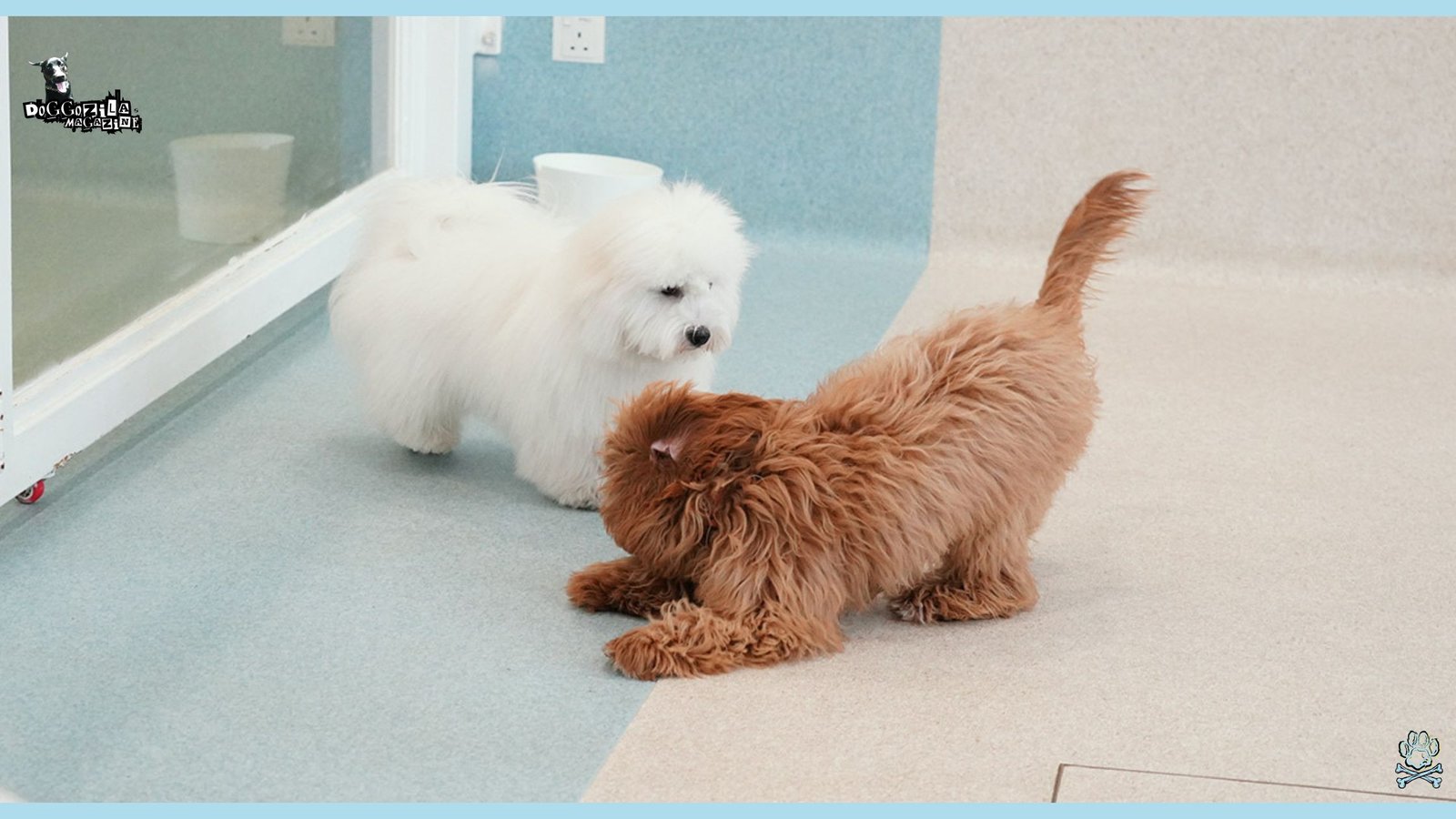
INTERPRETING THE MEANING BEHIND A DOG PLAY BOW IN PLAYFUL INTERACTIONS
Understanding the meaning behind a playful gesture like the Dog Play Bow can unlock the secrets to deeper canine communication and connection. This subtle yet expressive cue is more than just a physical posture; it conveys emotion, intent, and encouragement all at once. By interpreting these signals accurately, pet owners can foster an environment where their dog feels understood and encouraged to interact positively.
Experts in animal behavior agree that recognizing and properly responding to these signals is crucial for maintaining harmonious interactions and playful adventures. Numerous case studies have shown that dogs displaying the Dog Play Bow are often at their happiest and most socially engaged.
Understanding Emotional Cues: Decoding What a Dog Play Bow Reveals
When a dog presents a playful bow, it is offering a glimpse into a world of unspoken emotions, where joy and trust intersect, and this is notably expressed as a Dog Play Bow. Researchers have detailed that this gesture often coincides with bright eyes, a wagging tail, and a relaxed stance that signals absolute comfort.
Observational data reveal that dogs exhibiting this behavior tend to laugh with their eyes and display genuine excitement for the moment. The synchronization of body signals during this bow creates a powerful communication channel that both calms and energizes the playmates involved.
Real-life examples from dog trainers illustrate how recognizing these cues can help transform a hesitant interaction into a spirited game. Understanding these emotional signals deepens the human–dog bond, ensuring that each Dog Play Bow becomes a cherished moment of connection.
Interpreting Subtle Gestures During Interactive Fun
During a playful session, subtle gestures such as a gentle leap, a swivel of the tail, or a lowered front end all contribute to the bigger picture of canine expression. In many playful moments, the overall composition of a dog’s posture provides context to the behavior, inviting others to join in the fun.
Detailed observations have shown that these small actions build upon one another to create a rich tapestry of signals that are instinctively understood by both dogs and their human companions. Trainers often emphasize the importance of paying attention to these minor details, as they can indicate shifts in mood or readiness for more vigorous play.
The blending of various signals creates an environment where every gesture counts, ultimately enhancing the overall play experience. This layer of subtlety not only enriches a dog’s communicative repertoire but supports a comprehensive understanding of their playful energy.
The Impact of Environment on the Frequency of a Dog Play Bow
The setting in which a dog plays can dramatically influence how often and how enthusiastically it displays a Dog Play Bow. Open, sunny areas, crisp autumn parks, and spacious backyards tend to inspire more frequent and energetic play bows as dogs feel liberated and joyous.
Field observations indicate that environments free from stress promote a healthy level of playfulness, enabling dogs to express themselves without reservation. Social play sessions in naturally stimulating contexts boost the occurrence of these memorable gestures, reinforcing their role in canine communication.
Owners who arrange regular outings in varied and engaging settings often notice a direct correlation between recent adventures and the frequency of the Dog Play Bow. This environmental impact not only reinforces the behavior itself but nurtures a vibrant bond between a dog and its surroundings.
🔑 Key Points: The play bow has deep evolutionary roots in canine social rituals. Wild canids used similar gestures to signal non-aggression, which evolved into the playful bow seen in domesticated dogs today. Historical evidence suggests this behavior has long promoted social bonding and conflict resolution among canines.

HOW TO ENCOURAGE A HEALTHY DOG PLAY BOW BEHAVIOR IN YOUR PET
Encouraging your furry friend to express itself through playful signals can be one of the most rewarding aspects of pet companionship, and the Dog Play Bow is a prime example of joyful expression. Through positive reinforcement and consistent interaction, owners can create a loving environment that promotes natural play behaviors. By understanding and celebrating these cues, pet owners can forge a deeper, more intuitive connection with their canine companions.
Many trainers recommend incorporating dedicated play sessions into daily routines to nurture this behavior and make it a fun, habitual part of life. Research from animal behavior studies shows that positive engagement techniques not only improve playfulness but also reduce stress and anxiety in dogs.
Practical Tips: Encouraging a Dog Play Bow During Play Sessions
Integrating a Dog Play Bow into your dog’s routine can begin with simple, fun exercises that reward every step toward natural playfulness. Starting with short play periods where you introduce toys and gentle tugs can help a dog become comfortable with the idea of playful gestures.
Consistent rewards in the form of treats and warm praise encourage the dog to repeat the behavior, gradually turning it into an instinctive cue. Trainers suggest that scheduling daily play sessions, even for just a few minutes, can create a predictable pattern that your dog will eagerly follow.
Observation of these sessions often reveals that the more relaxed and joyful your dog feels, the more readily it performs the Dog Play Bow. Over time, these practical steps not only enhance play behavior but also build a stronger, happier bond between you and your dog.
Communication Strategies to Enhance Bonding and Joyful Expression
Developing intuitive communication between you and your pet is essential for nurturing behavior that comes naturally and joyfully. Recognizing your dog’s signals and responding with consistent cues and praise enhances mutual understanding during play.
Quiet moments of eye contact, gentle petting, and enthusiastic encouragement go a long way toward reinforcing positive behaviors. By adopting communication practices that mirror your dog’s mood and energy, you steer interactions in a playful and relaxed direction.
Such strategies are supported by research that shows dogs who receive clear, empathetic responses have higher levels of overall trust and confidence. Whether through verbal praise, tactile gestures, or simply shared playtime, fostering joyful exchanges bridges the gap between expectation and expression.
The Role of Positive Reinforcement in Strengthening a Dog Play Bow Display
Positive reinforcement is a cornerstone in canine training, seamlessly enhancing the natural expression of the Dog Play Bow while making every play session an opportunity for growth. Reward-based techniques, such as offering treats, affectionate praise, or interactive toys, create a cycle where the dog’s playful bow is continually celebrated.
Trainers have observed that this type of reinforcement not only increases the frequency of the behavior but also deepens the dog’s enjoyment during interactions. Research in animal psychology confirms that immediate rewards prompt a faster learning curve, reinforcing behaviors that are smart, energetic, and fun.
This approach helps maintain a steady, joyful rhythm in play that both the dog and the owner appreciate. With every successful display of the Dog Play Bow, the bond of trust and mutual understanding grows ever stronger.
🔑 Key Points: Positive reinforcement strengthens playful behavior. Rewarding play bows with treats, praise, or toys encourages dogs to repeat the behavior. Structured yet flexible play sessions help maintain a dog’s natural enthusiasm for the bow.

EXPLORING VARIATIONS IN THE DOG PLAY BOW: BREED, MOOD, AND PLAY
Not all dogs express playfulness in the same way, and variations in the Dog Play Bow can reveal fascinating insights into breed characteristics, mood, and the overall spirit of play. Different breeds may have unique ways of displaying this behavior, and subtle differences can indicate a range of emotions from exuberance to gentle invitation. By observing these nuances, owners can adapt their approaches to encourage organic and confident socialization among their pets.
Pet behaviorists have noted that these variations not only add charm to canine interactions but also help shape personalized training and social strategies. The diversity in playful cues reminds us that every dog is unique, with its own expressive style that evolves with context and experience.
Exploring Behavioral Variations: When Does the Dog Play Bow Occur?
The Dog Play Bow may occur under different circumstances depending on a dog’s personality and environment, offering a window into moments of spontaneous excitement and gentle communication. Field research has shown that some dogs exhibit the behavior almost instinctively during group play, while others may reserve it for interactions with familiar friends.
Noting the frequency and context in which this bow is displayed allows pet owners to fine-tune training practices and social activities. Comparative studies across breeds indicate that while the basic structure remains the same, individual variation is influenced by past experiences and current mood levels.
This natural diversity in expression is what makes each instance of the Dog Play Bow a truly unique event, one that cannot be easily replicated. As a result, careful observation of these playful signals deepens our appreciation for the rich tapestry of canine behavior.
Breed-Specific Tendencies and Their Playful Signals
The distinctive traits of different dog breeds often manifest in the way they communicate playfulness, and these breed-specific tendencies can offer valuable clues to interpreting signals. Larger breeds might use broader, more exaggerated motions, while smaller breeds may present a more compact version of the playful bow.
Understanding these nuances helps owners and trainers customize their approaches to encourage natural behavior tailored to each dog’s physicality and temperament. Research into breed behavior highlights that certain breeds, known for their high energy and sociable tendencies, tend to display more frequent and dynamic playful bows.
Likewise, calmer breeds may use subtler, yet equally communicative, gestures that require a keen eye to appreciate. This insight into breed-specific play underscores the importance of personalized training and reinforces the beauty of diversity in canine expression.
Energetic Displays: Comparing Play Bows Across Different Breeds
Observing dogs in bustling parks or during playful group sessions often reveals a colorful spectrum of energetic displays, where each breed brings its own flavor to the act of bowing for play. Some dogs launch into vigorous, almost acrobatic bows that signal an explosion of playful energy, while others deliver a gentle, measured gesture that invites calm interaction.
Comparative studies performed in natural settings have documented these differences, providing an eclectic view of how the Dog Play Bow adapts to various temperaments and physical characteristics. The variations observed underscore the adaptability of canine behavior as well as the role that temperament plays in shaping these signals.
Enthusiastic anecdotes from pet owners and trainers illustrate that no two play bows are exactly alike, making every interaction a new adventure. This diversity not only enriches our understanding of canine communication but also reinforces the idea that every dog has a unique language of play.
🔑 Key Points: Context matters—environment and breed influence play bow variations. Open, stimulating spaces (like dog parks) encourage more frequent play bows. Breed-specific differences exist, with larger breeds often using exaggerated motions and smaller breeds displaying subtler bows.

TRAINING TECHNIQUES THAT ENHANCE CANINE INTERACTION WITHOUT INTERRUPTING THE DOG’S NATURAL BOW
Enhancing natural canine behaviors during play without interfering with a dog’s innate communication requires thoughtful, innovative training techniques that respect each pet’s individuality. By combining structured exercises with free-form play, owners can create an environment that naturally encourages charming and ongoing playful bows. Striking the right balance between guidance and freedom ensures that every interaction remains fun and enriching for both the dog and its family.
Modern training embraces the philosophy that play should be spontaneous yet nurtured, thereby supporting the natural flow of canine expression. Evidence from various training programs and case studies suggests that approaches rooted in patience and positive reinforcement yield long-lasting, joyful outcomes.
Modern Approaches to Canine Training That Respect Natural Behavior
Modern training programs are increasingly shifting toward methods that honor a dog’s natural tendencies, ensuring that fun is never forced but rather invited organically. Innovative techniques include interactive play sessions where the emphasis is on allowing every playful gesture to emerge naturally, creating an atmosphere of trust and joy.
Trainers now advocate for methods that blend structured exercises with periods of free exploration, enabling a smooth integration of learning with natural behavior. The goal is to enhance the dog’s confidence and social aptitude while preserving its instinctive ability to communicate playfully.
These progressive approaches are supported by extensive research into canine psychology, which emphasizes the importance of preserving a dog’s authentic signals during play. The modern training paradigm celebrates individuality and encourages every dog to express itself in its own unique way without pressure or over-correction.
Integrating Play and Learning to Foster Genuine Canine Joy
Seamlessly integrating play with learning is at the heart of training methods that result in happier, more expressive dogs. By designing sessions that are both fun and educational, owners create moments where the dog feels free to unleash its natural energy and creativity.
Trainers emphasize that a relaxed learning environment, where opportunities for spontaneous expression abound, leads to a genuine love of play and natural behaviors. Through such integration, dogs receive the mental stimulation they crave without feeling that their instincts are being suppressed.
This balanced approach is known to build stronger bonds between the dog and its owner, resulting in lasting, positive memories. As playful activities become interwoven with lessons, the process bolsters not only obedience but also a resilient, joyful spirit that shines through in every interaction.
Real-Life Success Stories from Trainers and Pet Owners in Natural Settings
Across various dog communities, countless success stories highlight how respectful, playful training methods have reinforced natural behaviors while deepening bonds between pets and their families. Many pet owners proudly share how allowing their dogs to express a natural bow during play sessions transformed once timid pups into confident, social creatures.
Trainers document these outcomes with enthusiasm, noting that when dogs enjoy the freedom to play authentically, their overall behavior and happiness improve dramatically. Live demonstrations in dog parks and at training sessions reveal that a minimal, supportive intervention can lead to an abundance of joyful, spontaneous gestures.
These real-life narratives are backed by measured improvements in social interactions and stress reduction among the dogs involved. Collectively, these stories offer compelling proof that gentle, well-balanced training fosters an environment where every dog feels free to display its natural playfulness.
🔑 Key Points: Training should enhance—not suppress—natural play signals. Modern training methods prioritize organic play, blending structured exercises with free-form interaction. Success stories show that allowing natural play bows boosts a dog’s confidence and social skills.

SAFETY AND SOCIAL BALANCE: WHEN A DOG’S PLAY BOW SIGNALS MORE THAN PLAY
While the Dog Play Bow is most often a sign of pure playful intent, it can sometimes communicate subtler messages that require a careful and informed interpretation. Ensuring that a dog’s playful behavior remains safe and socially balanced involves understanding the context in which these signals are given. Creating a secure, positive environment where each dog feels both free and guided is essential for maintaining harmonious relationships and preventing misunderstandings.
Careful observation and professional insight reveal that what appears to be a friendly bow may occasionally serve as an early warning signal in high-energy interactions. Trainers and behaviorists stress the importance of attentive supervision during group play to interpret these signals correctly.
Identifying When a Play Bow is a Signal for Caution and Deep Social Cues
Not every playful bow is created equal; sometimes, the intensity or context of the gesture may indicate an underlying need for space or a pause in interactions. Observant pet owners learn to differentiate between a joyful play invitation and a subtly cautious gesture that signals discomfort.
Detailed behavioral studies have shown that slight variations in the bow’s intensity can be key to understanding the dog’s emotional state. In settings where multiple dogs interact, careful monitoring helps identify when one dog might be overstimulated or in need of a break.
This nuanced observation fosters a safer, more supportive play environment where every dog’s limits are respected. By understanding these variations, owners can better manage play sessions and ensure that all participants feel secure.
How to Interpret Mixed Signals: The Dog Play Bow in a Broader Canine Context
In lively social interactions, dogs sometimes emit mixed signals that can be complex to decipher, and applying a Dog Play Bow perspective can clarify these ambiguous moments. Observations in busy dog parks reveal that while a bow typically signifies playful intent, it might occasionally blend with signals of uncertainty when a dog is confronted with unfamiliar situations.
Trainers recommend considering the accompanying body language—in particular, ear position, tail movement, and overall posture—to accurately interpret a dog’s mood. Integrating knowledge of the Dog Play Bow with other behavioral cues yields a holistic view of a dog’s emotional state.
Real-life examples demonstrate that attentive owners can often resolve potential conflicts by recognizing subtle shifts in these signals. This analytical approach ultimately fosters a safer, more empathetic environment where each dog’s signals are understood in context.
Expert Advice on Balancing Playfulness With Social Safety
Prominent canine behaviorists have long emphasized that ensuring the safety of play is as crucial as celebrating its joy, and practical advice often centers on maintaining a harmonious balance. Experts suggest that appropriate supervision and an environment free from overwhelming distractions can cause dogs to express their natural playfulness safely.
Trainers regularly advocate for interactive sessions that allow dogs to alternate between high-energy play and calm periods of rest, preventing over-stimulation. Consistent observation and gentle redirection ensure that playful behaviors remain positive and free from escalating tensions.
These practices, recommended by experts, not only preserve the spirit of a Dog Play Bow but also maintain overall social balance among dogs. Keeping play sessions fun yet structured ultimately leads to healthier, happier social interactions for all participants.
🔑 Key Points: Play bows can sometimes signal caution, requiring careful interpretation. While usually friendly, context (e.g., tense body language) may indicate a dog needs space. Expert advice emphasizes supervision to ensure play remains safe and balanced for all dogs involved.
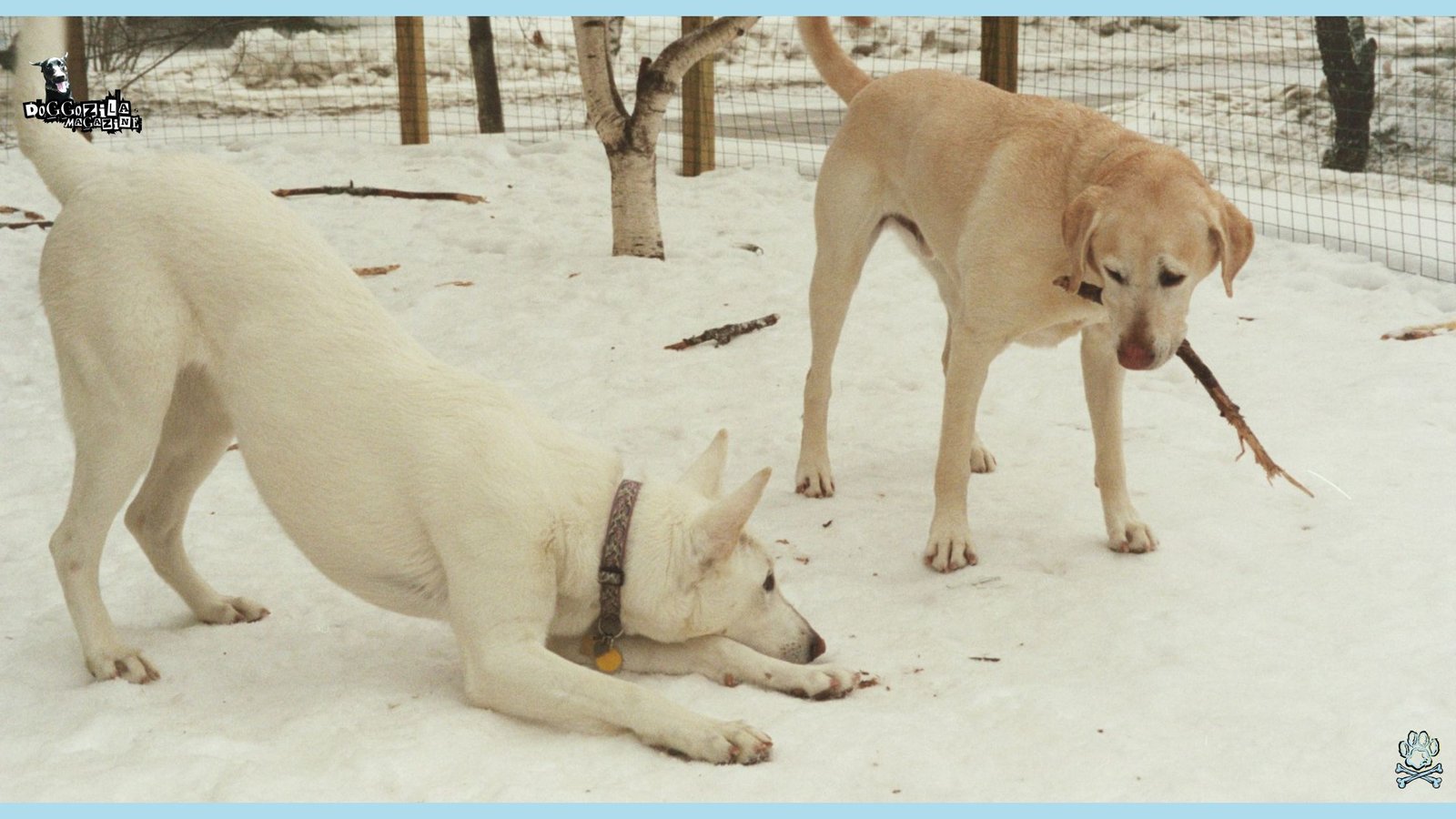
CELEBRATING CANINE JOY: EMBRACING NATURAL PLAY AND THE BOW IN DAILY LIFE
Embracing and celebrating the natural playful spirit of dogs transforms everyday moments into vibrant adventures filled with laughter, connection, and remarkable stories. Simple rituals like a casual bow or a spirited chase provide windows into the canine soul, reminding us of the uncomplicated joy of being alive. Whether through planned play dates or impromptu backyard games, the consistent practice of fun infuses daily routines with excitement and discovery.
Integrating fun routines and spontaneous play into daily life encourages pets to freely express themselves and deepen their bonds with their family. Observational research and heartwarming owner testimonials reveal that regular, joyful interactions have lasting benefits on both the physical and emotional well-being of dogs.
Creating Memorable Moments: The Impact of Routine Play on Dog Happiness
Routine play is a powerful tool in creating enduring memories and reinforcing the unique bond that exists between owners and their pets. Regular interactions where a dog casually demonstrates affection through playful bows and exuberant antics have been shown to boost overall mood and reduce stress.
Many families find that scheduling daily play sessions not only strengthens their pet’s confidence but also creates cherished moments of spontaneous delight. Research in animal behavior confirms that these predictable, joyful interactions foster more resilient and emotionally balanced dogs.
Over time, these daily routines become treasured traditions that enrich the lives of both dogs and their owners. The lasting impact of routine play ensures that every day is met with enthusiasm and warmth.
How Family Rituals Enhance the Monitoring of a Dog Play Bow and Natural Play Behavior
Family rituals that incorporate shared play experiences offer a unique way to celebrate and monitor a dog’s natural expressions of joy, including the Dog Play Bow. Some families have incorporated special game times and routines where every playful moment is acknowledged and gently encouraged, creating an atmosphere of love and belonging.
These rituals not only foster consistent behavior but also serve as opportunities for learning and growth, as owners become more attuned to subtle cues in their pets. Scientific studies note that a strong home environment enriched with regular, interactive play sessions contributes to long-term behavioral benefits in dogs.
Parents and pet owners alike appreciate how these traditions transform ordinary days into mini-adventures filled with laughter and wonder. As the Dog Play Bow becomes a familiar, celebrated sight, each ritual reinforces the importance of mutual affection and attentive care.
Future Trends in Canine Enjoyment and the Evolution of Play Routines
Looking ahead, the evolution of pet care and technology is poised to revolutionize how we engage with our dogs, making play an even more immersive and interactive experience. Innovations in smart toys, virtual reality play sessions, and community-based events are already beginning to shape the future of canine enjoyment.
As research continues to uncover the beneficial effects of structured and spontaneous play, owners and trainers are excited to see how play routines adapt to modern lifestyles while preserving natural behaviors. The emphasis remains on harnessing the undeniable charm of the playful bow and related cues as essential markers of canine happiness.
With each new advancement, the goal is to create enriched social environments where every dog feels valued and inspired. These future trends promise that the spirit of play will remain a central, ever-evolving aspect of the human–dog relationship.
🔑 Key Points: The play bow is an evolved form of canine communication, signaling playful intent and preventing aggression. Puppies as young as four weeks old use it instinctively, showing its deep-rooted role in social behavior. When your dog drops into a bow, they’re signaling, “Hey, let’s have fun—no fighting here!”

3 fun facts about the dog play bow that you might not know
1. Dogs Sometimes “Fake” a Play Bow to Trick Other Pups
Just like humans playfully exaggerate gestures, some clever dogs will do a quick, half-hearted play bow to lure another dog into chasing them—only to suddenly dart away in a mischievous game of keep-away. It’s their version of saying, “Psych! Bet you thought we were playing nice!“
2. The Play Bow Might Be a Canine “Pinky Promise”
Researchers have observed that when a dog accidentally plays too rough, they’ll often follow up with an extra-enthusiastic play bow—almost like they’re saying, “I didn’t mean it! Let’s keep playing, I promise I’ll be gentle!“ It’s their way of hitting the reset button on fun.
3. Some Dogs Use the Play Bow as a “Doorbell” for Attention
Ever seen your dog plop into a play bow right in front of you while you’re working? Some smart pups learn that humans can’t resist this adorable pose, so they use it like a “Hey, pay attention to me!“ button—especially if they’ve noticed it gets you to grab a toy or start a game.
Would you believe some dogs even combine it with a dramatic sigh for maximum effect?
🐾

